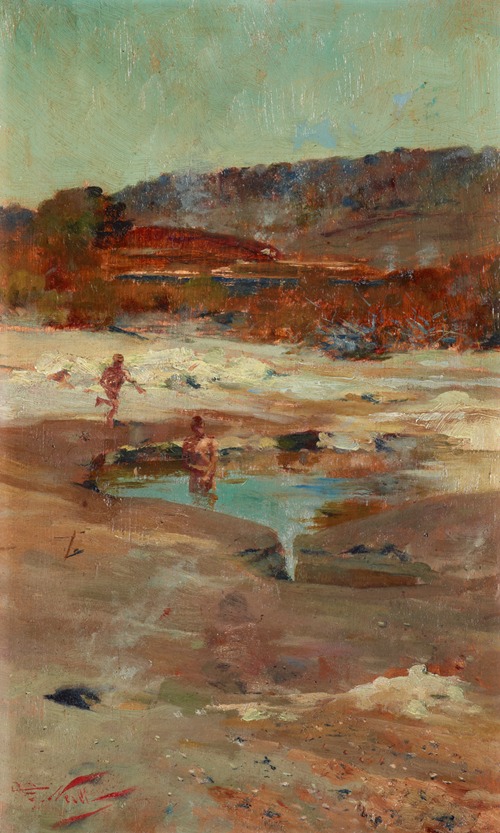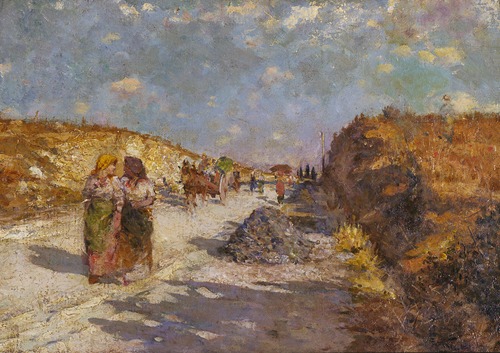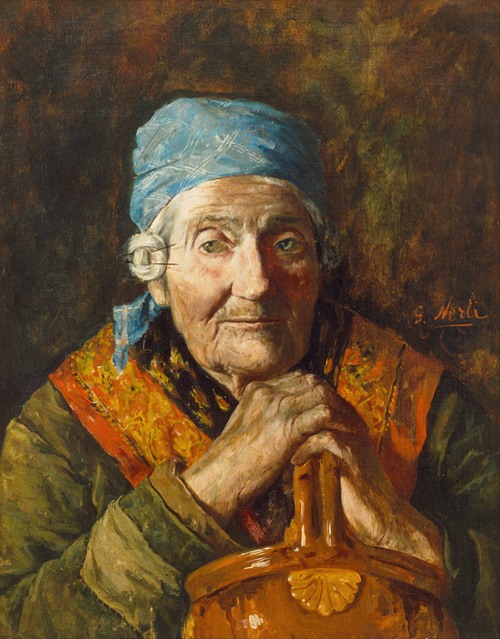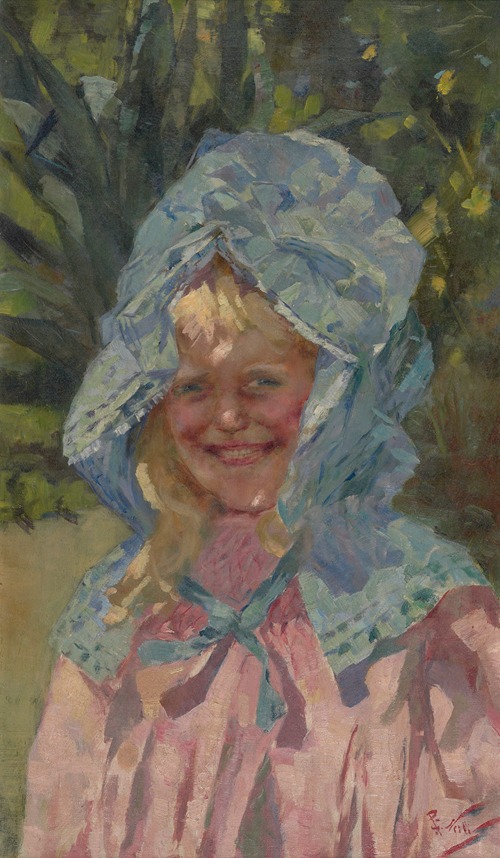
Girolamo Pieri Pecci Ballati Nerli, known more commonly as Girolamo Nerli, was an Italian painter who worked and travelled in Australia and New Zealand in the late 19th century influencing Charles Conder and Frances Hodgkins and helping to move Australian and New Zealand art in new directions. His portrait of Robert Louis Stevenson in the Scottish National Portrait Gallery Edinburgh, is usually considered the most searching portrayal of the writer.
Born in Siena in Italy to an Italian aristocrat, Marchese Ferdinando Pieri Pecci Ballati Nerli, his full name was Girolamo Pieri Pecci Ballati Nerli. The fourth of six children he was not a 'Marchese' as he was sometimes styled, or a 'Count', but a 'patrizio di Siena', a minor distinction marking the great antiquity of his family. His father married Henrietta Medwin, an Englishwoman. Her father Thomas Medwin was a minor literary figure in Byron's circle, the author of Journal of the Conversations of Lord Byron and of The Life of Percy Bysshe Shelley; Medwin was a second cousin on both parents' side of Shelley. Girolamo studied art in Florence under Antonio Ciseri and Giovanni Muzzioli and was a younger member of the Italian Macchiaioli school, the 'patch painters', an Italian movement anticipating French Impressionism.
He went to Australia in 1885 spending time in Melbourne and Sydney where he was an associate of Tom Roberts and Arthur Streeton and an influence on Charles Conder at the time of the Heidelberg School. Nerli's role in that movement has been disputed but his presence and influence are undeniable.
He went first to Melbourne but by 1887 was in Sydney where he encountered Conder. He caused a sensation there late that year with his exhibition of paintings of bacchanalian orgies, and in 1888 his portrait of Myra Kemble the actress attracted much attention at the exhibition of the Royal Art Society at Sydney. The free brushwork and unfinished appearance of the works were as exciting to connoisseurs as the subjects were to the general public. In 1889 he was back in Melbourne, apparently in the company of the Heidelberg painters. Late in 1889 he went to Dunedin in New Zealand for the New Zealand and South Seas Exhibition where he encountered the artist Alfred Henry O'Keeffe. He went back to Australia in 1890.
In August 1892 he visited Samoa and painted the well-known portrait of R. L. Stevenson, now in the Scottish National Portrait Gallery. A portrait in pastel done during the same visit was bought by Scribner and Sons, New York, in 1923. Stevenson wrote some humorous doggerel verse recording their encounter.
In 1893 Nerli returned to Dunedin where he set himself up as a private art teacher. 'Signor Nerli' remained in the city just over three years bringing new vigour to the circle presided over by W.M. Hodgkins and a cosmopolitan glamour to Dunedin's second, bohemian circle of younger painters. He taught Frances Hodgkins, inspired O'Keeffe and reportedly had an affair with Grace Joel, a young woman artist he may also have known in Melbourne. In 1893 Nerli was elected to the council of the Otago Art Society and in 1894 set up the Otago Art Academy with J.D. Perrett and L.W. Wilson in Dunedin's Octagon. Its life classes employing a professional nude model were so successful that the government run Dunedin School of Art had to hire Nerli for the same purpose. It seems this was the means by which painting from the nude was inaugurated at the school.
Late in 1896 Nerli left Dunedin suddenly, stayed briefly in Wellington and went on to Auckland. He opened a studio there and exhibited at the Auckland Society of Arts in April 1897. He then eloped with Marie Cecilia Josephine Barron whom he married in Christchurch New Zealand, in March 1898. She was a Spinster of 23, and he said he was a Bachelor and Artist of 38; he gave his name as Girolamo Pieri Ballati Pecci Nerli, but the surname in the index was "Pecci". The couple immediately sailed for Australia settling first in Sydney and then Melbourne. Nerli and his wife returned to Europe in 1904 where the artist spent the rest of his life, struggling against declining fortunes, between London and Nervi, Genova (Genoa) in Italy. He died childless in Nervi on 24 June 1926.






